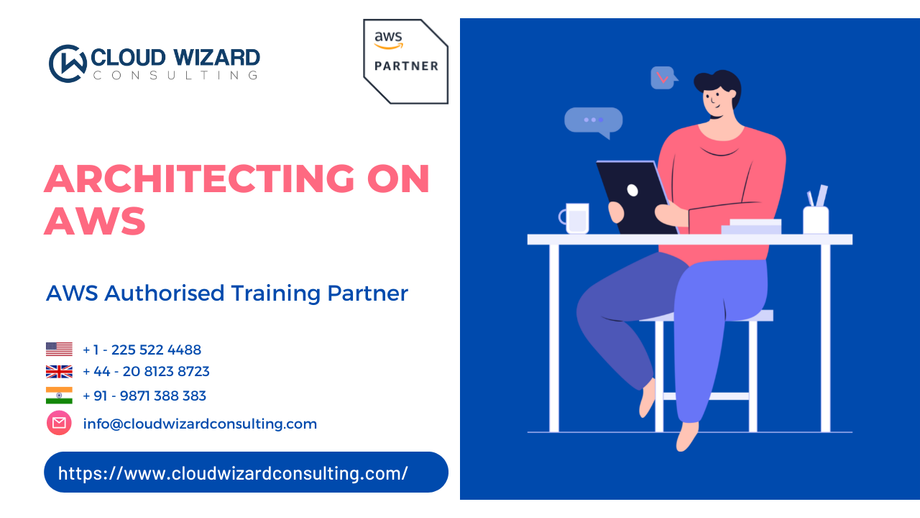Cloud computing is changing the way businesses work. With Amazon Web Services (AWS), companies can build applications that are fast, reliable, and scalable. But to get the most out of AWS, you need to follow the right strategies. This is where Architecting on AWS comes in!
If you want to learn how to design strong and scalable cloud solutions, getting the right training is important. At Cloud Wizard Consulting, we help professionals gain the skills needed for AWS Certified Solution Architect exams.
In this blog, we’ll explore the best practices for Architecting on AWS to help you build scalable cloud solutions.
1. Design for Scalability
Scalability means that your system can handle more users and traffic without breaking. AWS has many tools that help you scale your applications, including:
● Amazon EC2 Auto Scaling – Adds or removes servers based on traffic.
● Elastic Load Balancing (ELB) – Spreads traffic across multiple servers.
● AWS Lambda – Runs code automatically without managing servers.
By using these services, businesses can grow without worrying about downtime. Want to learn more? Check out our Solutions Architect training.
2. Use a Microservices Approach
Instead of building one big application (monolith), AWS recommends breaking it into smaller services (microservices). Each service does one job and runs independently.
AWS services that support microservices include:
● Amazon ECS and EKS – Run applications in containers.
● AWS Lambda – Execute small tasks without servers.
● Amazon API Gateway – Manage communication between services.
Microservices help make applications faster, more flexible, and easier to update. If you're preparing for the Solution Architect certification, understanding microservices is key!
3. Optimize Performance with Caching
Caching makes applications faster by storing frequently used data. AWS provides powerful caching tools, such as:
● Amazon CloudFront – Speeds up content delivery.
● Amazon ElastiCache (Redis, Memcached) – Caches database queries for quick access.
● AWS Global Accelerator – Routes traffic to the fastest AWS region.
By using caching, businesses can improve performance and reduce costs. Want to become an AWS Certified Solution Architect? Our Solutions Architect training covers these concepts in detail.
4. Ensure High Availability and Fault Tolerance
No system is perfect, but AWS helps businesses stay online even if something fails. Best practices include:
● Deploying applications in multiple AWS Availability Zones (AZs).
● Using AWS Route 53 for automatic failover.
● Storing backups in Amazon S3 or Amazon RDS Multi-AZ for disaster recovery.
These strategies help create reliable systems that keep running, even when problems occur. Learn more about Architecting on AWS in our Solutions Architect training.
5. Secure Your AWS Infrastructure
Security is important when building cloud solutions. AWS provides security best practices such as:
● IAM (Identity and Access Management) – Controls who can access AWS services.
● AWS Key Management Service (KMS) – Encrypts sensitive data.
● AWS Security Hub – Monitors security threats.
A good AWS architect understands how to protect applications and data. Our Solution Architect certification program teaches security best practices in detail.
6. Manage Costs Effectively
AWS is pay-as-you-go, meaning you only pay for what you use. But costs can still add up! Here are some ways to save money:
● Use AWS Savings Plans or Reserved Instances for long-term savings.
● Monitor spending with AWS Cost Explorer and AWS Budgets.
● Use Amazon S3 Intelligent-Tiering to store less-used data at a lower cost.
Understanding cost optimization is an important skill for an AWS Certified Solution Architect. Need expert guidance? Join our Solutions Architect training.
7. Follow the AWS Well-Architected Framework
AWS provides the Well-Architected Framework, which helps businesses design secure, efficient, and cost-effective cloud solutions. It has five key pillars:
- Operational Excellence – Automate and monitor operations.
- Security – Protect data and applications.
- Reliability – Build systems that recover quickly from failures.
- Performance Efficiency – Optimize resources for the best performance.
- Cost Optimization – Reduce costs while maintaining quality.
By following these principles, you can build better cloud solutions on AWS. Learn all about it in our Solution Architect certification training program.
Conclusion
Building scalable cloud solutions on AWS requires the right strategy. By following best practices like scalability, microservices, caching, security, and cost optimization, businesses can create strong and efficient cloud architectures.
Want to master Architecting on AWS? Get started with Solutions Architect training and become an AWS Certified Solution Architect today!

